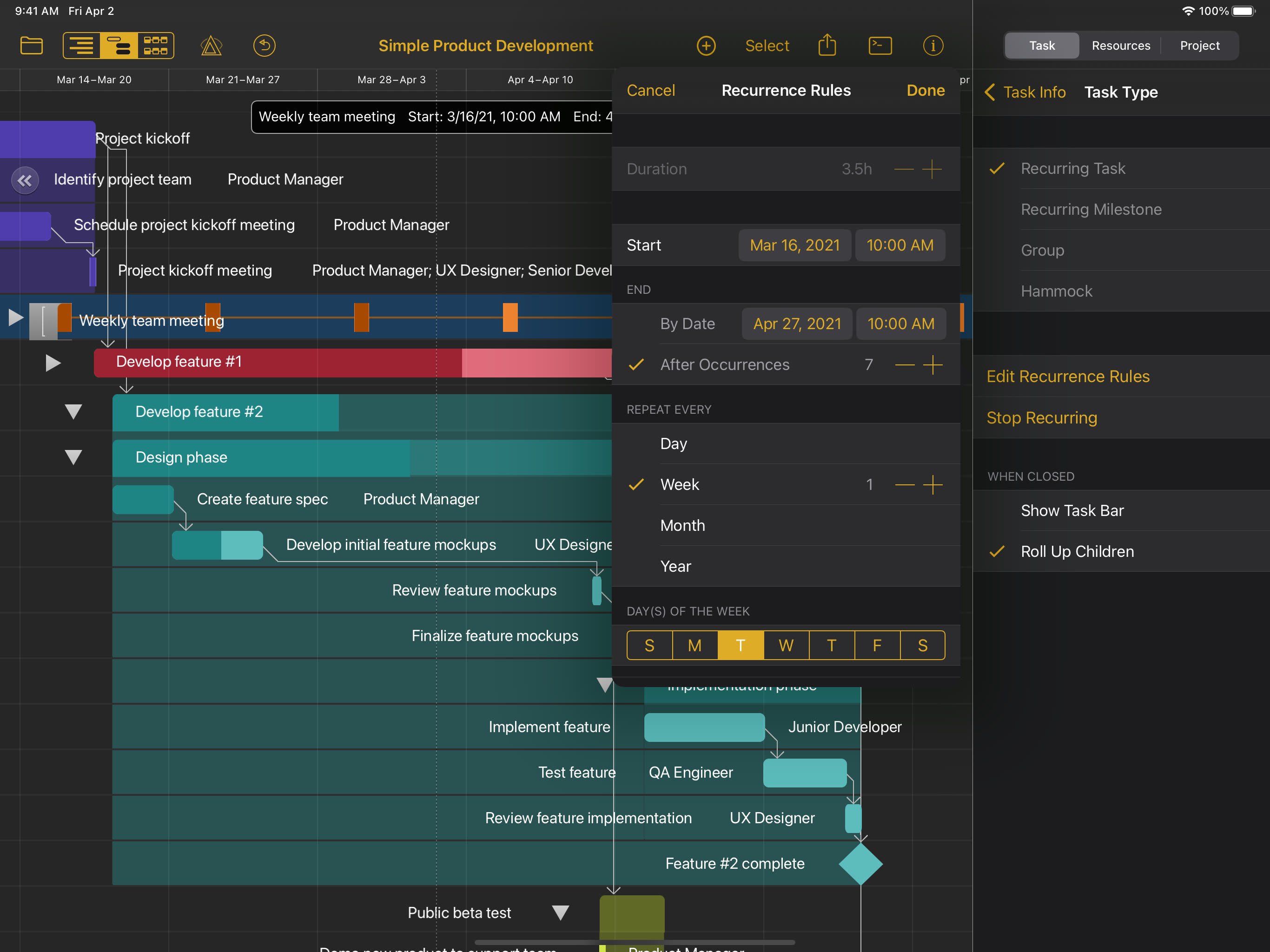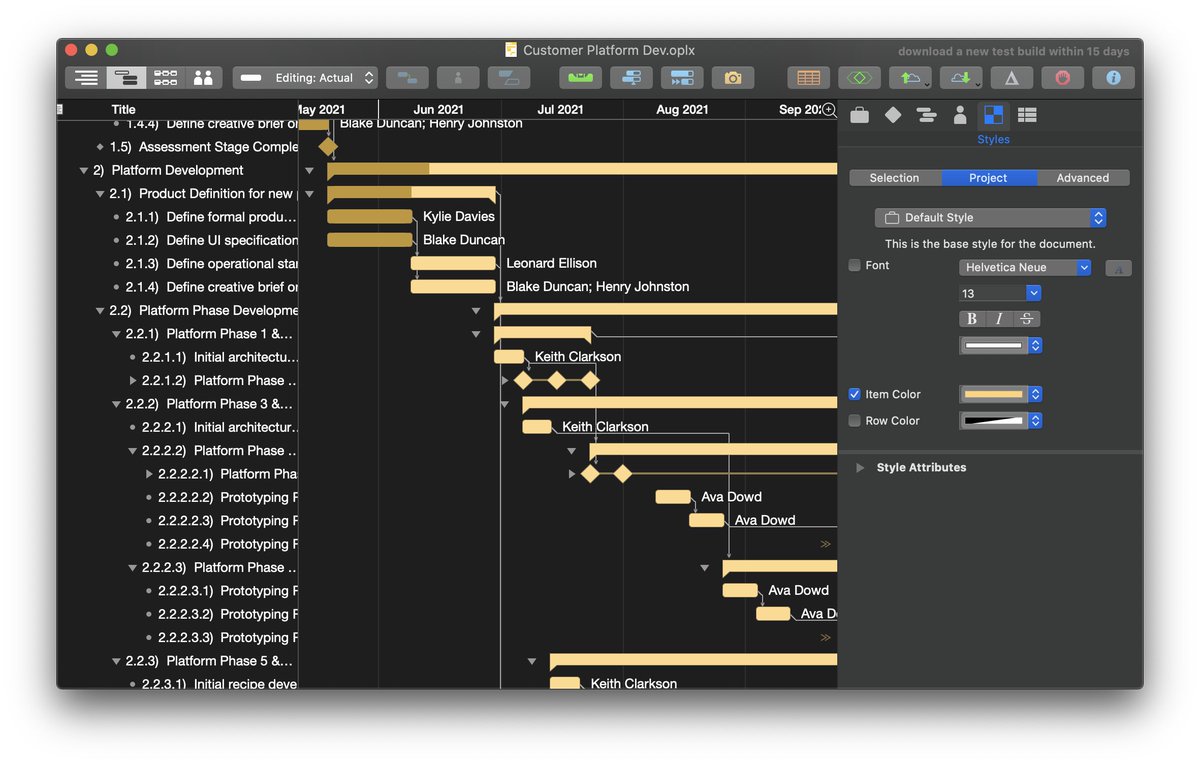


Using that scenario, let’s create an example hammock task. This type of task is useful when facing a hard deadline and deciding what can be compressed if the project is running behind schedule, or if external factors influence when parts of the project must happen.įor example, if you were to prepare a written document, the time allotted for editing would vary depending on the completion of the document and its due date. (FS is the most common type of dependency, so a task ID by itself without any letters is assumed to be FS.)Ī Finish to Start dependency from task ID 4.2, with a lead time of 1 day.Ī hammock task is one in which the duration is dependent on both when the previous task ends, and the next task starts. These codes combine the IDs of the tasks involved and the type of dependency like so:Ī Start to Finish dependency from task ID 1Ī Start to Start dependency from task ID 1Ī Finish to Start dependency from task ID 4.1. In the Dependents or Prerequisites columns of a task, type a dependency or prerequisite code. Whether you drag from the start or the end of the prerequisite task, and whether you drop onto the start or end of the dependent task, determines the type of dependency. It becomes a dependency line, which you can then drop onto the start or end of another task, group, or milestone. Put the mouse pointer over a task bar in the Gantt chart, then drag one of the arrows that appears at the beginning or end of the bar. Select two or more tasks in the task outline or the Gantt chart, then click the triangle in the corner of the Connection button-or click and hold the Connection button-to summon a menu of dependency types choose the type you want.

Select two or more tasks in the outline view or the Gantt chart, then click the Connection toolbar button to create a Finish to Start dependency between each subsequent task.

If a dependency becomes impossible or you manually cause a task stop obeying its dependencies, a violation occurs, which can be resolved with the Violations window. With further changes to the schedule and leveling, the tasks continue trying to follow the dependencies. When you create a dependency, the dependent task automatically reschedules itself to respect the dependency. A dependency line is drawn from the beginning or end of one task (or group, or milestone) to the beginning or end of another. Using the Gantt chart in Task View, you can represent the relationships between tasks with dependency lines. Charting dependencies in your project is a key part of understanding the critical path of tasks that leads through to its successful completion, on time and within budget. When a task must be completed before another can begin, a dependency exists between them.


 0 kommentar(er)
0 kommentar(er)
